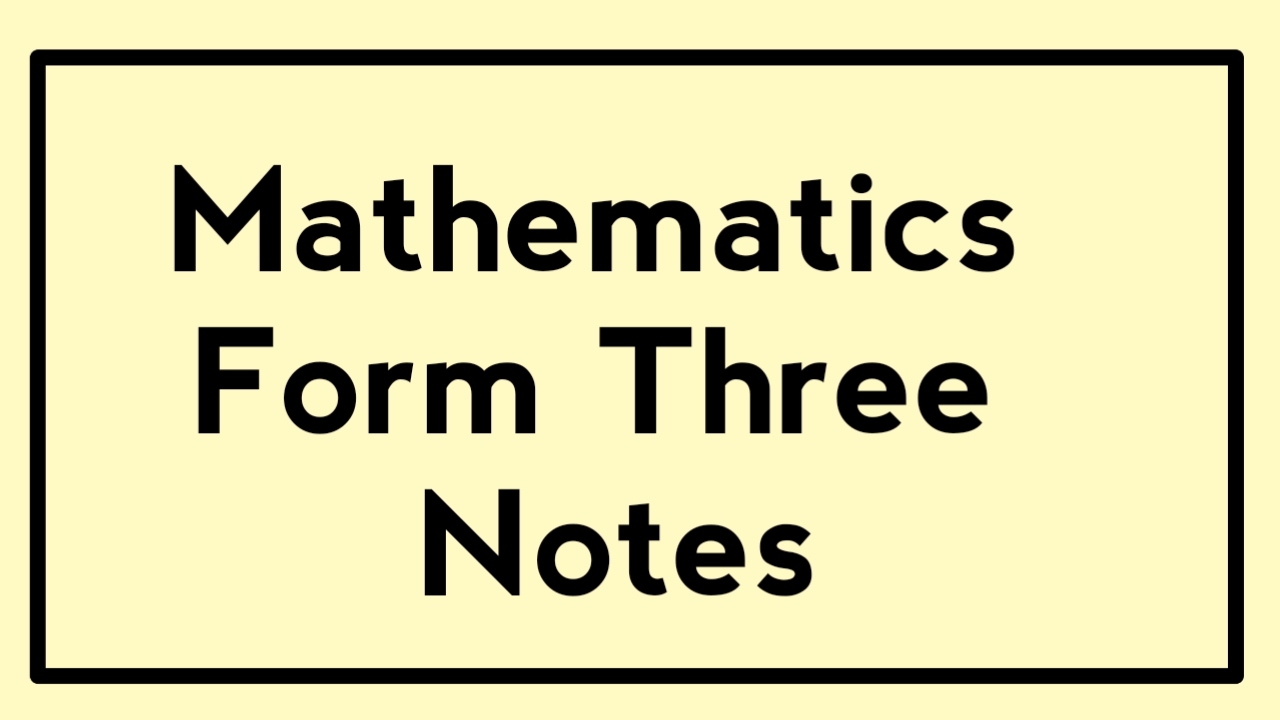As students progress through their mathematical education, Form Three marks a significant step in deepening their understanding of key concepts. Here’s a comprehensive overview of the main topics covered in Form Three mathematics to help guide your study and preparation.
DOWNLOAD HERE FORM THREE BASIC MATHEMATICS NOTES
1. Algebra
1.1. Simplifying Algebraic Expressions
- Like Terms: Combine terms with the same variable.
- Expanding Brackets: Use distributive property to simplify expressions like (a(b + c) = ab + ac).
- Factorization: Factor expressions into products of simpler expressions. Common techniques include factoring out the greatest common factor and using special products such as (a^2 – b^2) (difference of squares).
1.2. Solving Linear Equations
- Single Variable: Solve equations like (3x + 5 = 14) by isolating (x).
- Simultaneous Equations: Solve systems of linear equations using methods such as substitution or elimination.
1.3. Algebraic Fractions
- Simplification: Reduce fractions by canceling common factors in the numerator and denominator.
- Operations: Add, subtract, multiply, and divide algebraic fractions, following rules similar to numerical fractions.
2. Geometry
2.1. Properties of Shapes
- Triangles: Study types (equilateral, isosceles, scalene) and their properties (sum of angles is 180°).
- Quadrilaterals: Understand properties of common quadrilaterals (squares, rectangles, parallelograms) and their angle sums.
2.2. Theorems
- Pythagorean Theorem: For right-angled triangles, (a^2 + b^2 = c^2).
- Angle Theorems: Properties related to angles in parallel lines, triangles, and other polygons.
2.3. Circles
- Properties: Learn about radius, diameter, circumference, and area.
- Theorems: Understand key theorems involving tangents, chords, and sectors.
3. Trigonometry
3.1. Basic Ratios
- Sine, Cosine, and Tangent: Understand definitions for right-angled triangles and how to apply them to find missing angles or sides.
3.2. Solving Problems
- Using Ratios: Apply trigonometric ratios to solve real-life problems involving angles and lengths in right-angled triangles.
4. Statistics
4.1. Data Handling
- Types of Data: Distinguish between qualitative and quantitative data.
- Measures of Central Tendency: Calculate mean, median, and mode.
4.2. Graphical Representations
- Bar Graphs and Histograms: Create and interpret these to represent data.
- Pie Charts: Understand how to divide a circle into sectors to represent proportions of data.
5. Number Theory
5.1. Properties of Numbers
- Prime Numbers: Identify and work with prime numbers and their properties.
- Factors and Multiples: Understand concepts like greatest common divisor (GCD) and least common multiple (LCM).
5.2. Fractions and Decimals
- Operations: Perform addition, subtraction, multiplication, and division with fractions and decimals.
- Conversion: Convert between fractions, decimals, and percentages.
6. Ratio and Proportion
6.1. Ratios
- Simplification: Simplify ratios and solve problems involving proportional relationships.
- Scale Factors: Use ratios to solve problems involving similar shapes.
6.2. Proportions
- Direct and Inverse Proportions: Solve problems involving direct and inverse proportional relationships.
Study Tips
- Practice Regularly: Mathematics requires consistent practice. Work on a variety of problems to strengthen your understanding.
- Understand Concepts: Don’t just memorize procedures—ensure you understand the underlying concepts.
- Use Resources: Utilize textbooks, online tutorials, and practice papers to supplement your learning.
- Seek Help: If you’re struggling with a particular topic, don’t hesitate to ask for help from teachers or peers.
By mastering these concepts, Form Three students will build a solid foundation for further mathematical study and real-world applications.
